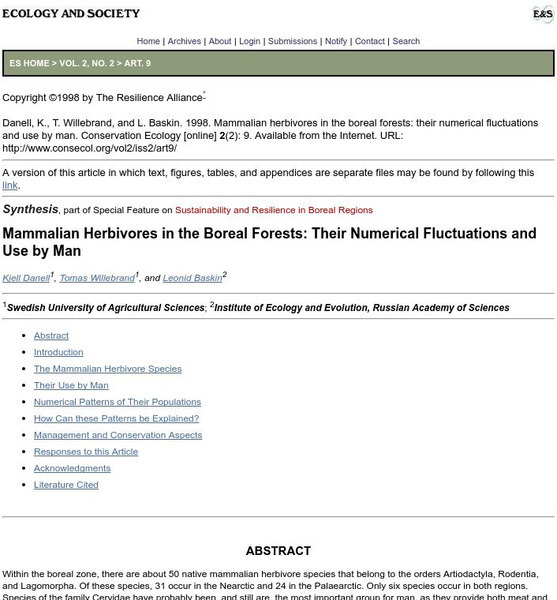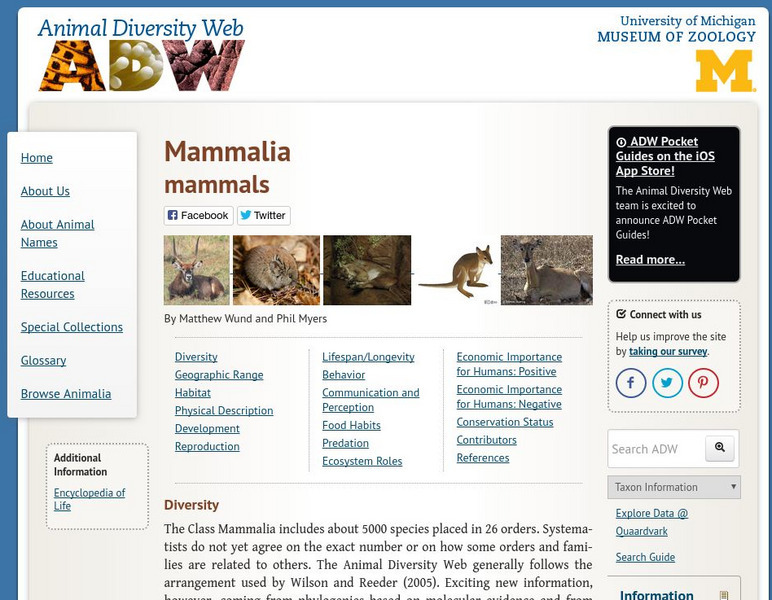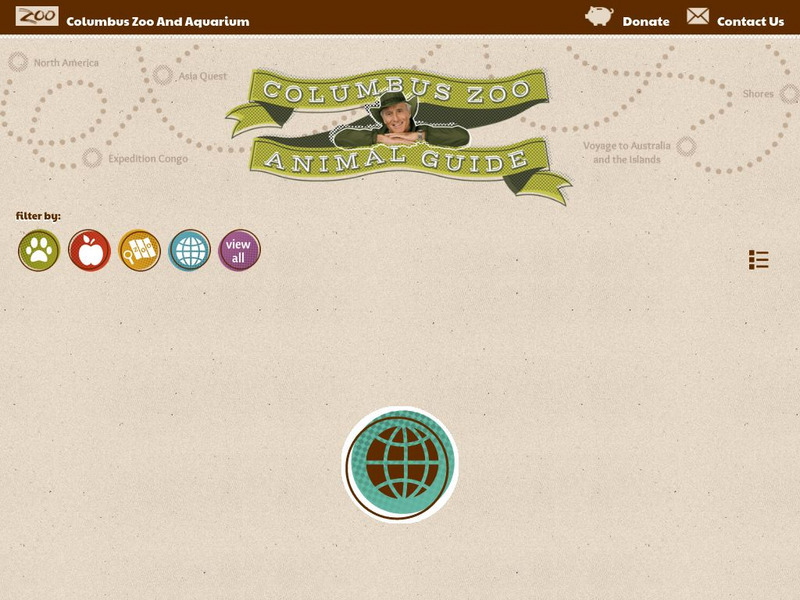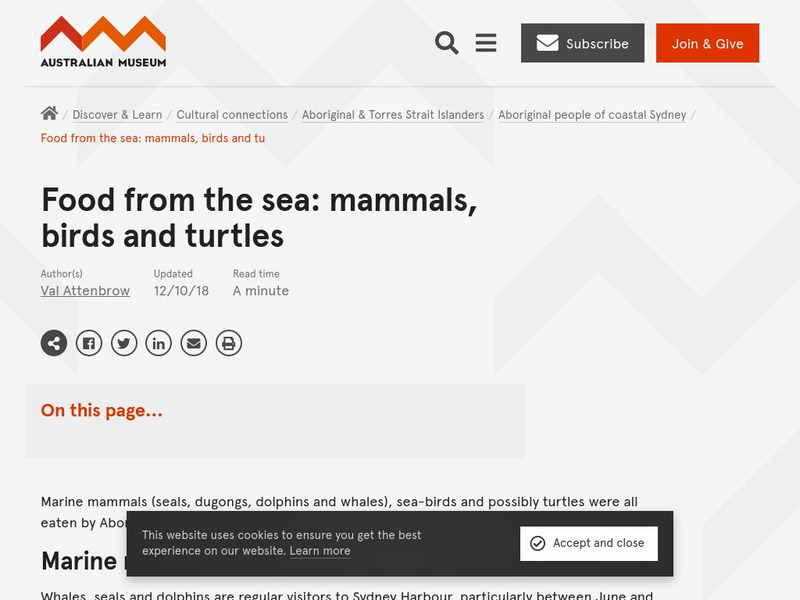Wikimedia
Wikipedia: Mammal
Wikipedia, an open-source encyclopedia, provides great information on mammals. Content includes a look at mammal characteristics, origins, classification, and more.
Missouri Botanical Garden
Missouri Botanical Garden: Eurasian Beaver
Here you can learn all about the Eurasian beaver, a large European rodent that lives in the taiga biome. Content includes information on this animal's appearance, diet, behavior, and more.
Wikimedia
Wikipedia: Bovid
Some factual information on bovids can be found in this Wikipedia encyclopedia article. There is also a table that provides scientific classification information on bovids as well.
Wikimedia
Wikipedia: Primate
Wikipedia offers several paragraphs of information on the term, "Primate," including a species chart and hyperlinked terms.
abcteach
Abcteach: Animals
[Free Registration/Login Required] This link will place at your fingertips all kinds of resources for your science unit pertaining to animals such as birds, bugs, dinosaurs, endangered species, fish, mammals and reptiles.
Other
Ladywildlife's How Mammals Move
Discusses the different ways mammals move. Also presents some key facts about some unique mammals and how they move.
Encyclopedia of Life
Encyclopedia of Life: Mammals
Thorough reference tool explores mammals with a description, pictures, and maps. Includes facts on ecology, behavior, habitat, conservation, and external links.
Sea World Parks & Entertainment
Sea World: Baleen Whales
Outlines the characteristics of the baleen whale, including classification, habitat, behaviors, and conservation. Helps students identify whales with a list of "Books for Young Readers." Information at a level of upper intermediate or...
McGraw Hill
Glencoe Biology: Mammal Characteristics: Self Check Quiz
Try these five multiple-choice questions about mammal characteristics. After submitting answers, students can review the material.
Quia
Quia: Animal Facts Scavenger Hunt
At this website you are given ten questions to answer and links to three websites where you can find those answers.
PBS
Pbs Nature Critter Guide: Raccoons
What do raccoons eat? Explore this site to find your answer. Students will gain a perspective of where and how raccoons live through this educational resource.
Annenberg Foundation
Annenberg Learner: Journey North: Humpback Whales
A very informative article that answers questions related to characteristics of the humpback whale plus life cycle, ecology, behavioral adaptations and conservation. The migratory patterns of this whale are also tracked.
Annenberg Foundation
Annenberg Learner: Journey North: Right Whales
A comprehensive article that answers a number of questions about the right whale. Questions deal with characteristics, life cycle, ecology and conservation. This site also contains lessons and activities that can be used in the...
Smithsonian Institution
National Museum of Natural History: Hall of Mammals: Giant Anteater
Brief illustrated overview of the giant anteater and an accompanying video demonstrate how this "food specialist lives up to his name".
Other
Resilience Alliance: Mammalian Herbivores
This site from the Resilience Alliance provides an in-depth look at mammalian herbivore population patterns in boreal forests. It also discusses man's use of these herbivores.
Regents of the University of Michigan
Animal Diversity Web: Mammalia
For an overview of the anatomy and characteristics of mammals, visit this Animal Diversity Website. Discusses characteristics not found in other animals, the function of their hair, and their production of milk.
Animal Fact Guide
Animal Fact Guide: Platypus
Comprehensive guide to the platypus that features information on its physical characteristics, habitat (with a distribution map), diet, breeding patterns, unique traits and behavior, and conservation status.
Other
Columbus Zoo and Aquarium: Mammals
This interactive animal guide from the Columbus Zoo highlights general information and fun facts about mammals; this information can be sorted by diet or region where they live. Select an animal from the extensive list to begin exploring.
Orpheus Books
Q Files: Life: Mammals
Check out the facts about mammals from diversity to their social groups.
Australian Museum
Australian Museum: Mammals of Sydney Harbour
Engaging site which covers some of the 40 species of mammals that live in Australia. Get quick interesting information on rodents, marsupials, bats and marine mammals that live in the Sydney Harbour area of Australia.
A-Z Animals
A Z Animals: Animal Facts: Echidna (Tachyglossus Aculeatus)
Illustrated entry describes the Echidna along with providing details about its habitat, physical characteristics, behaviour, and breeding.
A-Z Animals
A Z Animals: Animal Facts: Malayan Civet (Viverra Tangalunga)
Provides an overview of Malayan Civets, including their habitat, appearance, behavior, diet, breeding, and much more. An image of this species and statistics can also be found here.
A-Z Animals
A Z Animals: Animal Facts: Masked Palm Civet (Paguma Larvata)
Investigate the world of the Masked Palm Civet and discover information on the appearance, habitat, and conservation status of this Asian jungle mammal. Includes an image and statistics.
CK-12 Foundation
Ck 12: Biology: Mammal Ancestors
[Free Registration/Login may be required to access all resource tools.] Discusses therapsid ancestors of mammals.























